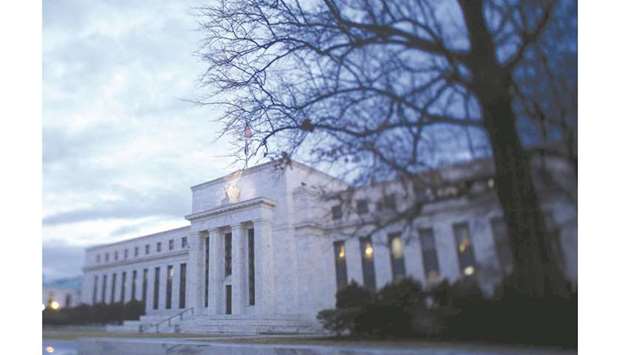With the strength of the world’s largest economy on display at year end, the US Federal Reserve is all but certain to leave interest rates untouched at its final policy meeting of 2019 this week.
While Latin America and Europe are stagnant and China has begun to sputter worryingly, November’s blockbuster US jobs report — which blew past economists’ expectations — underscored the resilience of American labour markets despite headwinds from President Donald Trump’s grinding trade war and signs of slower consumer spending.
In that context, the Fed may feel it can take a bow for piloting a Goldilocks economy: one that is just right.
The signs of resilience validate the Fed’s decision in October to pause policy after three cuts in the benchmark lending rate this year.
Policymakers can now wait to see how the economy performs early in the new year.
The rate-setting Federal Open Market Committee will release its decision at 1900 GMT on Wednesday, along with an updated quarterly economic forecast.
Since the last meeting in October, Fed members have made clear that monetary policy is a in “good place.” However a “material change” in their outlook could cause them to move again.
“At this point in the long expansion, I see the glass as much more than half full,” Fed chairman Jerome Powell said in a November speech.
Consumer spending and confidence are strong.
The housing market has picked up.
Unemployment is still very low as hiring continues.
GDP growth slowed in the third quarter but was still better than feared.
Futures markets as of Friday predicted the Fed would leave rates untouched until at least September of next year, when another cut could occur.
The odds of a recession within the next 12 months, according to the New York Federal Reserve Bank, have also begun to decline (though they are still pretty high at about one in three). The outlook could change dramatically depending on what happens to the trade conflict with China.
If Washington and Beijing manage to seal a partial trade deal and at least cease hostilities, an end to uncertainty could give businesses a sharp boost.
Economist Diane Swonk of Grant Thornton told AFP an apparent truce in the China trade war seemed to have lightened the mood among consumers and employers along with a helping hand from the Fed’s stimulus.
“There has been this detente that’s gone on for more than 50 days,” she said. “It doesn’t cure the situation and the uncertainty but at least you’re not adding insult to injury which allows the consumer to move forward.”
“The tipping point really is, you know whether or not we get some kind of phase one deal,” she said.
Trump announced a deal in October but which still has not yet been signed, although more positive signals have trickled out.
As the summer came to an end, the Fed slashed lending rates, spooked by a slackening economy and the slow burn of a trade war that took several turns for the worse as the acrimony between Washington and Beijing mounted.
Those days were “far from dull,” Powell said in the November speech, recalling queasy moments this year as manufacturing fell into recession, business investment tanked, exports sank and job creation figures were revised substantially downward.
Even amid more positive data, those dark spots in the economy have mostly persisted.
Adjusted for inflation, consumer spending in October was the weakest since February.
Economists warned that pressure on the Fed to resume cutting could return.
Rubeela Farooqi, chief US economist at High Frequency Economics, told AFP she expected GDP growth could slip below two% at the end of 2019 and into the first quarter of 2020. “If that actually happens and you see other spillover effects, I think the FOMC will probably need to ease further in the first quarter of next year,” she said.
Farooqi said she expected a good holiday shopping season — a time when retailers expect to see more business than many other months of the year combined — but the fourth quarter had started out soft.
“That’s the biggest risk,” she said. “We’ll have to see how it turns out.
I do think we’ll see a little bit of a slowdown.”

A view of the US Federal Reserve building in Washington DC. The rate-setting Federal Open Market Committee will release its decision at 1900 GMT on Wednesday, along with an updated quarterly economic forecast.


